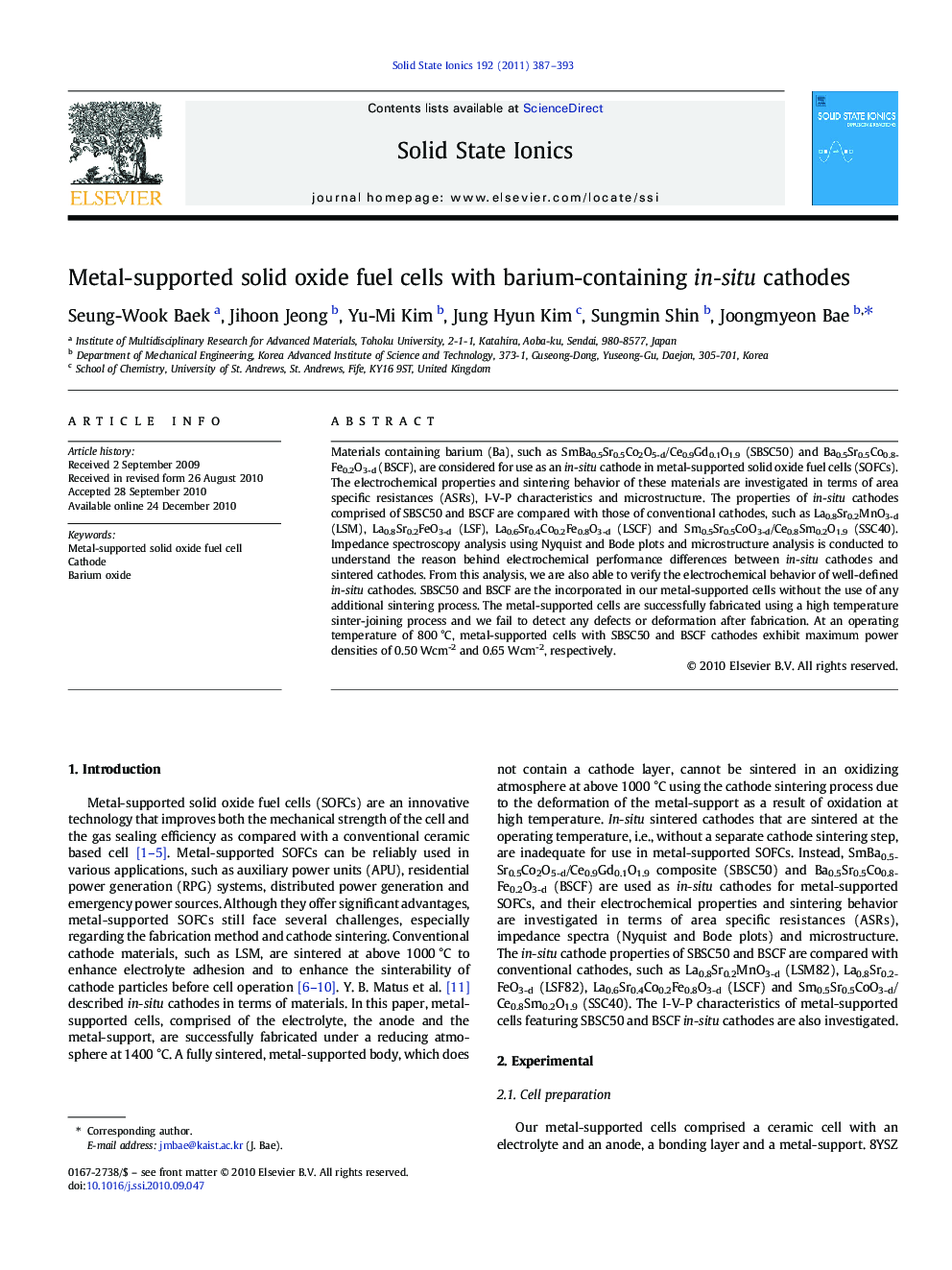| Article ID | Journal | Published Year | Pages | File Type |
|---|---|---|---|---|
| 1296487 | Solid State Ionics | 2011 | 7 Pages |
Materials containing barium (Ba), such as SmBa0.5Sr0.5Co2O5-d/Ce0.9Gd0.1O1.9 (SBSC50) and Ba0.5Sr0.5Co0.8Fe0.2O3-d (BSCF), are considered for use as an in-situ cathode in metal-supported solid oxide fuel cells (SOFCs). The electrochemical properties and sintering behavior of these materials are investigated in terms of area specific resistances (ASRs), I-V-P characteristics and microstructure. The properties of in-situ cathodes comprised of SBSC50 and BSCF are compared with those of conventional cathodes, such as La0.8Sr0.2MnO3-d (LSM), La0.8Sr0.2FeO3-d (LSF), La0.6Sr0.4Co0.2Fe0.8O3-d (LSCF) and Sm0.5Sr0.5CoO3-d/Ce0.8Sm0.2O1.9 (SSC40). Impedance spectroscopy analysis using Nyquist and Bode plots and microstructure analysis is conducted to understand the reason behind electrochemical performance differences between in-situ cathodes and sintered cathodes. From this analysis, we are also able to verify the electrochemical behavior of well-defined in-situ cathodes. SBSC50 and BSCF are the incorporated in our metal-supported cells without the use of any additional sintering process. The metal-supported cells are successfully fabricated using a high temperature sinter-joining process and we fail to detect any defects or deformation after fabrication. At an operating temperature of 800 °C, metal-supported cells with SBSC50 and BSCF cathodes exhibit maximum power densities of 0.50 Wcm-2 and 0.65 Wcm-2, respectively.
